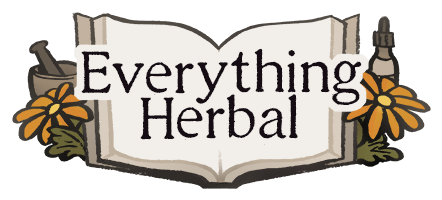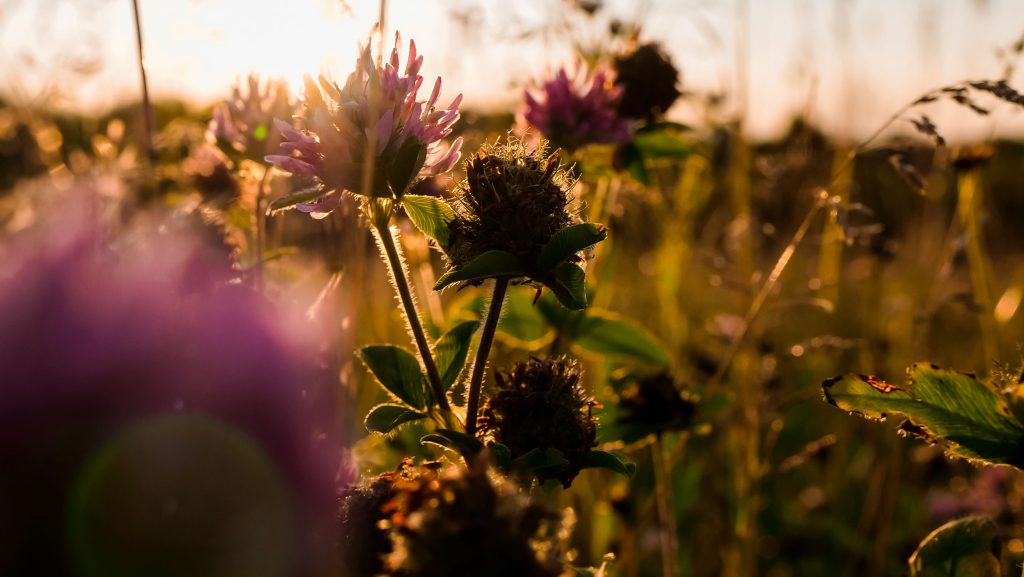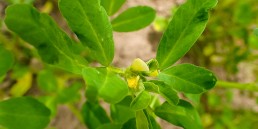Herbal Actions
What is a “herbal action”?
When we speak about the action(s) of a certain plant, we are referring to one or more effects a plant can have on our body. Often these actions are explained in two or three words; however, herbal actions are so much more than that! Since plants are wonderful complex beings, they also have several actions. Most herbs can compliment their action(s) in combination with another herb, basically showing off their best side with the support of a “good friend”. Sometimes they work great on their own, but most of the times, they excel with a good buddy on their side. Think- Teamwork!
Alteratives
In this blog post, I would like to have a closer look at the ‘alterative’ action of herbs. After studying my resource books and putting together what I have gathered from my mentors, it turned out to be quite difficult in nailing it down to one definition. What can be found in the next few lines, is a summary of my own attempt to define alteratives. While some herbalists may agree with the words below, others may crunch and frown upon this review. As with all studies, especially herbal studies, learn your craft from many different teachers and find what works best for you.
When I think of alteratives, I immediately think of a tonic action. Tonifying herbs usually slowly, but gradually, alter and support the bodies natural actions and functions. Unlike carminatives for instance, which may help you feel better promptly after a heavy meal has left you feeling full and with an aching stomach, tonic herbs like alteratives take more time to show effects. These effects however, keep one in for the long run and can show beneficial changes in several organs and organ systems. Herbalists once referred to alteratives as ‘blood purifiers’. Nowadays however, most herbalists no longer use this term, as only pure blood can keep one alive and if blood would be poisoned or ‘impure’, our bodies would die.
How Alteratives Work
Alteratives gradually restore proper function of the body, which automatically increases overall health and vitality. By helping to disperse toxic buildup in the interstitial fluid, alteratives aid the body to properly remove toxins and therefore, improve the metabolism, supporting proper absorption and delivery of nutrients and insure healthy elimination. As alteratives are masters of proper elimination, they mainly work on the kidneys, liver, lungs, the lymphatic system and skin.
Many alterative herbs are rich in minerals, vitamins and other trace elements and highly nourishing substances. Furthermore, most alteratives are alkalizing to the blood and help neutralize excess acid in the system. Some work by stimulating digestive function and some are immunomodulators. As stimulants, they mildly stimulate and activate the vital organic functions of the liver and gall bladder.
Personally, I have successfully used alteratives for a variety of instances. I am most excited to share how I was able to effectively clear stubborn eczema on my hands. By its special affinity in supporting organs of elimination, alteratives can help to restore sluggish liver functions. As the master detoxifier, the liver has a wide variety of functions and tasks. If these lack, so does proper elimination, and other organs have to take over the job of a comprised liver. Usually, the lungs, skin, kidneys, liver, colon and lymph share the many tasks of elimination. If one organ works at half capacity, another organ has to pick up the slack. In many cases, it can fall onto the skin, which then may break out with rashes or other skin eruptions. Alteratives are best supported with a holistic treatment protocol, which your herbalist can help you design. This could include dietary, physical, emotional and other lifestyle changes.
It is important to note that initially after starting treatment, skin eruptions can worsen. This is because the skin has already been trying to push these ‘stuck wastes’ out, and with the help of alteratives, now get’s a ‘push’ to finish this task. Therefore, before improvement is seen, initial worsening may happen, usually lasting for only a short period of time.
When to Use Alteratives
When in doubt, use alteratives. As most alteratatives are very gentle and work over a longer period of time, they should be the first group of herbs to consider when working with chronic inflammatory and degenerative diseases. These include skin issues, digestion issues, heat and dryness, cysts, arthritis and autoimmune conditions.
Energetics
As for energetics, many alteratives are bitters. Generally, most bitter plants are drying. In traditional Chinese medicine toxins of the blood and toxin-producing infections are considered ‘excess heat’. Since the Liver is associated with heat, too much heat can create extreme imbalance. Many alteratives are cooling liver herbs.
What are Energetics?
In herbalism we often refer to the “energetics” of plants. This can be a very helpful tool, as we get to not only consider the medicinal action of a plant and a certain condition we are trying to treat, but much more than that, we actually learn to work with the entire ecosystem of both plants and humans/animals. The basic energetics I will be referring to are cold/warm/damp/dry. As an example, if your underlying body condition is usually cold and dry, counter this with warm and damp herbs. This being said, I am not speaking of the actual, measurable temperature of a plant or fruit, but the effect this herb has on the body. As an example, think of biting into a piece of ginger or a cayenne pepper. Hot or cold? How about nibbling on chickweed or biting into a watermelon? Hot or cold?
If this interests you, Matthew Wood’s Book “The Practice of Traditional Western Herbalism” is awesome, or try Jim McDonald’s “Actions and Energetics in Western Herbalism” (available online).
Examples of Some Alterative Herbs
- Arctium lappa (Burdock root) is both preventive and medicinal as it supports the detoxification process. Burdock root assists liver supporting toxin elimination through the skin and bowels. As a bitter, Burdock stimulates the secretion of digestive juices, especially bile. Therefore, it helps with digestion and appetite. Burdock is cooling, as it cools the ‘heat’ of rashes. It is extensively used for the treatment of skin conditions that result in dry and scaly patches. Most effective for psoriasis if used over long period of time. Also great for teenagers with problem skin.
- Taraxacum officinale (Dandelion root and leaf) is similar to Burdock root. Dandelion is useful in signs of a hot inflamed liver with stagnation. It improves liver function and aids the natural detoxification process while protecting liver cells from oxidation and damage. The leaves have clear affinity for the gallbladder and, as such, aid in the digestion of fats. Ideal for those with “sour stomachs”. Great as digestive bitter, cooling to the liver. For chronic inflammation of the liver, it aids proper metabolism, supports detoxification and elimination. It also brings relief in gout and rheumatism as well as glandular swelling.
- Berberis aquifolium, Mahonia spp. (Oregon Grape Root) As a mild alterative, Mahonia is great for use with children as well as the elderly. It has a strong affinity for the liver and supports detoxification and elimination. As a bitter, moistening root that supports secretion of bile from the liver, it shows efficiency in bowel movements. In his book, The Practice of Traditional Western Herbalism, Matthew wood writes that, ‘The typical Mahonia patient is thin, dry, and constipated, with rough, scaly, dry skin.’
- Urtica dioica (Nettles) are considered a ‘blood building herb’ (eczema, headaches) as it tonifies organs and boosts the actions of many organ systems with a special affinity for the urinary tract/kidneys. Nettle is used as a spring tonic and general detoxifying remedy, being an excellent source of nutrition for the weak and feeble, recovering from illness or nursing mothers. Nettles are one of the most nourishing tonic herbs and foods we have in Western herbal medicine. Often times, Nettles are used specifically for childhood eczema and beneficial for all varieties of this condition, especially nervous eczema. Nettles can be helpful as a component of treatment for eczema in adults.
- Trifolium pratense (Red clover) Red clover is said to ‘thin the blood’ and has purification properties often benefitting those suffering with eczema, acne and other skin conditions. It is an important remedy for many childhood ailments and may be used safely for any case of eczema. Red clover is considered in cases of edema and hardened, sore lymph nodes, softening stubborn, hard, encysted lymph nodes. For clearing up cysts in the body, as any alterative, red clover needs to be used over a longer period of time. It has a special affinity to glands around the neck, under the ear and towards the back of the neck, as it tends towards single swollen glands. Check out the doctrine of signatures; The flower head resembles a lymph node. Further, Red clover acts on the liver, protects and aids in detoxification.
I hope this post gave you a little insight on Astringents and how they can interact with our body. This topic is covered much more in depth in the herbal course, which is currently developed and coming soon by our group of wonderful herbalists.
Resources:
Besides my own words, this write up features information from the following resources:
- Jim McDonald – Foundational Herbcraft – www.herbcradft.org – collected writings from www.PlantHealkerMagazine.com.
- David Hoffmann – Medicinal Herbalism: The science and practice of herbal medicine. Healing Art Press, Rochester, Vermont 05767. 2003.
- Abrah Arneson – The Herbal Apprentice: Plant Medicine and the Human Being – Green Heart Press. 2014.
- Matthew Wood – The practice of Traditional Western Herbalism – Basic Doctrine, Energetics and Classification – North Atlantic Books, Berkley, California. 2004.
- Rosemary Gladstar – Herbal Recipes for Vibrant Health – Storey Publishing, 2001/2008
Evelyn Mueller
I am a community herbalist based in Ontario, Canada, and a graduate of The Ginkgo Tree Herbal Course and founder and creator of ‘The Lion’s Tooth’: a 12 month program to help families re-connect with nature and use plants like their ancestors did. It is my mission to share the wonders nature provides for us, to establish meaningful relationships between humans and plants as well as to help awaken our embedded instincts and use those to nurture and heal our body, our mind and our wonderful earth.
Subscribe to Blog via Email




